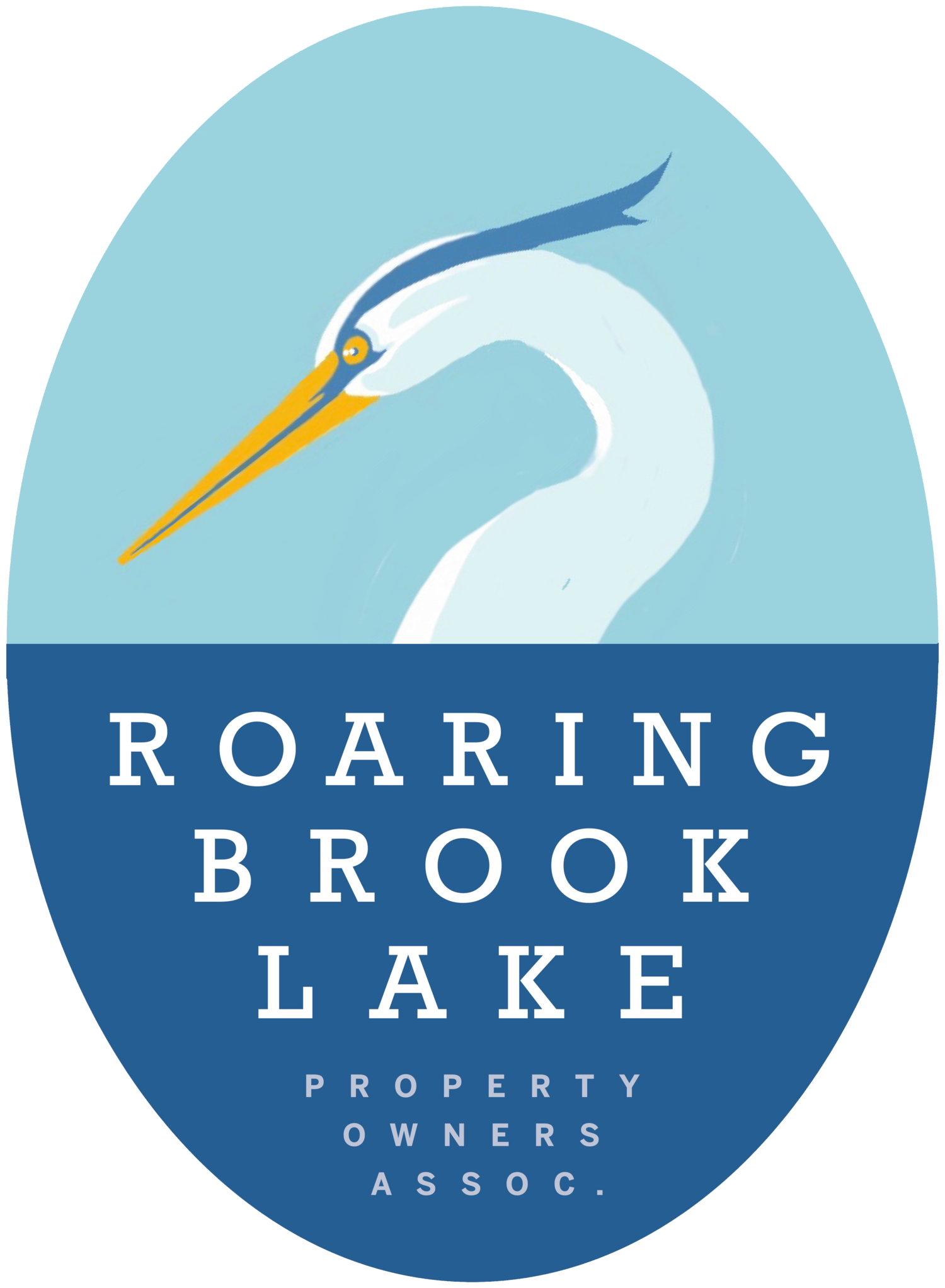State of the lake 2020
with A. J. Reyes
On June 20, 2020, Putnam Valley Supervisor Sam Oliverio introduced A. J. Reyes, the lake manager of Roaring Brook Lake. A. J. began with photos of toxic algae from RBL and a DEC list of documented toxins in RBL compared to other neighboring lakes. Nutrient pollutants (mainly phosphorus and nitrogen) along with hot, still weather contribute to toxic algae.
Where do the nutrient pollutants come from? External loading of nutrients includes septic systems, stormwater run-off, lawn fertilizers, and goose droppings. Internal loading is the accumulated stored nutrients in deep-water sediments. Those deep sediments include a “legacy” of decades of externally loaded nutrients, going back to when the lake was first developed. Even if we do everything possible to limit new nutrients entering the lake, we will still have to deal, eventually, with the legacy nutrients that have accumulated in the deep hole of the lake. AJ discussed various options available for addressing internal loading.
He suggested that while we are evaluating ways to address internal loading, we begin work on external loading — good practices around the lake. He emphasized that, eventually, we will need to tackle both internal and external sources of nutrient pollution. He mentioned high E coli levels found at stream entrances, almost certainly a result of aging septic systems. He made some practical suggestions for improving septic care, including identifying tiers of septic systems according to how they contribute phosphorus, and setting up a designated fund that will reimburse homeowners for maintenance and replacement of septic systems, as needed. He discussed plans for the coming year that will include a survey of the fish in the lake.
His conclusions: (1) 2019 monitoring established internally loaded phosphorus as a source of nutrients for algal growth. (2) He recommends managing both internal and external loading. (3) Address stormwater management in major inlets and high slope areas. (4) Continue frequent pumping and inspection of septic systems, with replacement of aging, ineffective systems and consider establishing a fund to defer costs of septic system maintenance and replacement.

